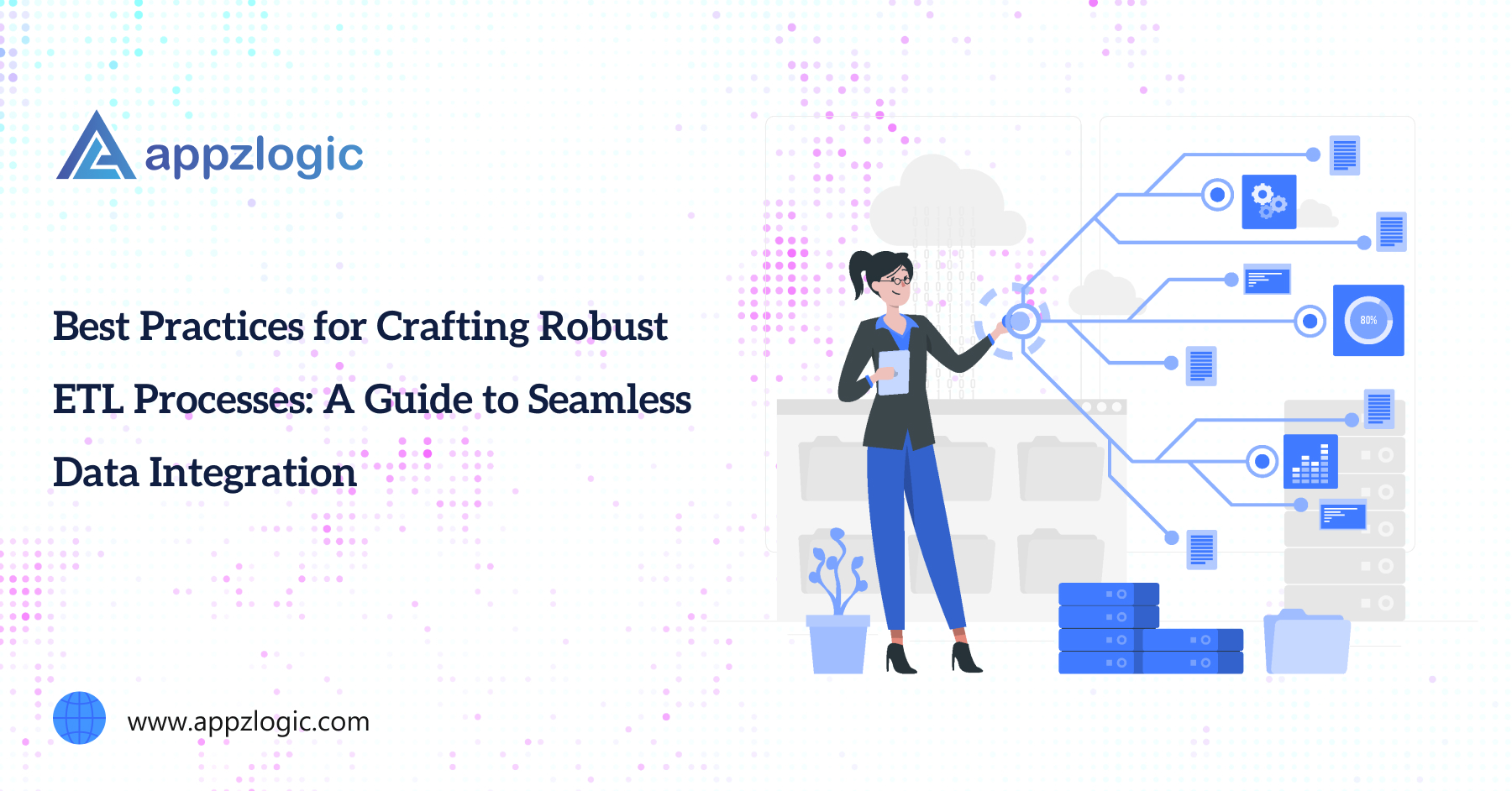In today’s data-driven world, extracting, transforming, and loading (ETL) is the backbone of every successful business intelligence (BI) and analytics initiative. Whether you’re managing customer insights, optimizing marketing campaigns, or streamlining financial reporting, the quality and efficiency of your ETL processes play a crucial role in delivering accurate and actionable data. However, designing and implementing robust ETL solutions can be complex, often riddled with pitfalls that jeopardize data integrity and compromise insights.
This blog, dedicated to ETL development, aims to equip you with best practices for crafting flawless ETL processes, ensuring smooth data integration and reliable insights. We will delve into every critical stage, from understanding requirements to monitoring performance, leaving you well on your way to mastering the art of data transformation.
Define Your Data Needs: Laying the Foundation
Every successful ETL journey begins with a clear understanding of your data needs. Before embarking on technical implementation, ask yourself:
- What kind of data do you need to analyze? Sales figures, customer demographics, social media trends? Be specific about the data sources and target destinations.
- What transformations are required? Do you need cleansing, filtering, aggregation, or even complex join operations? Clearly define the manipulations needed.
- What is your desired output format? Data warehouses, relational databases, or cloud-based analytics platforms? Knowing your target destination helps shape the transformation steps.
- Once you have a solid grasp of your data needs, document them meticulously. This serves as a roadmap for your ETL development and ensures everyone involved (from analysts to developers) is on the same page.
Choose the Right Tools: Building Your Toolkit
With a multitude of ETL tools available, selecting the right one is crucial for efficient and scalable data integration. Consider these factors:
- Complexity of your data needs: Simple flat files might require lightweight tools, while complex transformations for diverse data sources necessitate robust ETL platforms.
- Integration capabilities: Ensure the chosen tool seamlessly connects with your existing data sources and target destinations.
- Scalability and performance: Can the tool handle increasing data volumes without compromising speed and accuracy?
- Budget and resources: Open-source tools can be cost-effective for smaller projects, while enterprise-grade solutions might be needed for complex, mission-critical data pipelines.
- Research and compare available ETL tools, conducting trials and testing their compatibility with your specific data environment. Choosing the right tool can significantly impact the efficiency and maintainability of your ETL processes.
Design, Develop, and Test: Building a Flawless Pipeline
Now comes the heart of ETL development: designing, building, and testing your data pipeline. Here’s a step-by-step approach:
- Design the ETL steps: Define the extraction, transformation, and loading operations in a clear sequence, taking into account dependencies between data sources and transformations.
- Develop the code: Implement the designed steps using your chosen ETL tool or custom scripting languages. Ensure modularity and reusability for efficient maintenance.
- Thorough testing: Test each ETL step individually and then the entire pipeline end-to-end. Use test data sets that mimic real-world scenarios to uncover potential errors and data quality issues.
- Documentation: Document your code, ETL design, and testing procedures for future reference and troubleshooting.
- Remember, iterative development is key. Be prepared to refine your design and code based on test results, ensuring your ETL pipeline delivers accurate and reliable data.
Deploy, Monitor, and Optimize: Continuous Improvement
Once your ETL pipeline is tested and validated, it’s time to put it into action. However, the journey doesn’t end there. Effective data integration requires continuous monitoring and optimization:
- Schedule regular executions: Ensure your pipeline runs at the desired frequency, whether daily, hourly, or near real-time.
- Monitor performance: Track data latency, errors, and resource utilization to identify bottlenecks and potential issues.
- Data quality checks: Implement automated data quality checks to ensure accuracy and consistency of transformed data.
- Regular optimization: Analyze log files and performance metrics to identify opportunities for improving speed, efficiency, and scalability.
- Remember, your data environment and needs evolve over time. Adapt your ETL pipeline accordingly, incorporating new data sources, refining transformations, and adopting more efficient tools as required.
Conclusion: Crafting ETL Expertise
Mastering the art of ETL development takes time, practice, and continuous learning. By following these best practices, you can build robust and reliable data pipelines that fuel powerful insights and empower data-driven decisions. Embrace the challenge, experiment with different tools and techniques, and soon you’ll be an ETL maestro, seamlessly transforming data into the lifeblood of your organization’s success.




